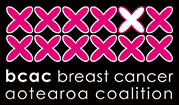Not all breast cancers are the same and determining what kind of breast cancer you have will help your medical team to decide what is the most suitable and effective treatment for you. Most treatment for breast cancer involves surgery. During surgery breast tissue is removed and will then be examined by a pathologist who will provide information on the kind of breast cancer you have.
Below you'll find information on:
Pathology Report
The Pathology Report is put together by the pathologist. It includes information on the following:
-
your clinical history
-
a description of the tissue type removed e.g. breast or lymph node
-
clinical diagnosis – the initial diagnosis made before your tissue sample was tested
-
gross description – explains the size, shape and appearance of this tissue
-
microscopic description - explains how the cancer cells look under the microscope
-
information on blood and other tests for proteins, genetic components and details about how fast the cells are growing
-
final diagnosis.
Setting the stage
The aim of the pathology report and other tests such as chest x-rays, MRIs, or CT scans is to “set the stage” of your cancer. Setting the stage allows medical staff to determine how advanced or otherwise the cancer is. To determine the stage, the following are taken into account:
-
tumour size
-
whether lymph nodes are involved
-
whether the cancer has spread beyond the breast and the underarm lymph nodes.
There are several different types of early breast cancer and these are outlined in the table below.
The stages of early breast cancer
| Stage 0 | Cancer has not spread beyond the ducts of the breast (also known as ductal carcinoma in situ or DCIS). |
| Stage I | Cancer cells are found outside the ducts in normal breast tissue, with tumour size of 20 mm or less and no spread beyond the breast. This is often also called invasive breast cancer. |
| Stage II | Invasive cancer in which the tumour size is: 20mm or less and has spread into a maximum of three underarm lymph nodes on the same side; over 20mm, but smaller than 50 mm with or without spread to maximum three underarm lymph nodes on the same side; or 20-50mm and/or the cancer has spread to the underarm lymph nodes. |
| Stage III | Tumour size is: greater than 50mm and has spread to one to three lymph nodes under the arm; smaller than 50 mm but has spread to four or more lymph nodes under the arm; or any size but with direct extension to the skin of the breast or to underarm lymph nodes the chest wall. |
The stages of metastatic, advanced, or secondary breast cancer, in which cancer has spread to other parts of the body are:
| Stage IIIB | Tumour (any size) has spread to skin of breast, chest wall, internal mammary lymph nodes. |
| Stage IV | Tumour has spread beyond breast, underarm, internal mammary nodes to other parts of the body – lungs, liver, bone, brain. |
In addition to staging, the cancer will also be given a grade between one and three. The grade indicates how fast your cancer has been growing. Grade 1 is a slow growing cancer, grade 3 is a fast growing cancer and grade 2 is growing at a rate in between grade 1 and 3.
Staging and the cancer grade will help determine the best treatment for you. This is likely to include surgery and may also include chemotherapy, radiation therapy, endocrine therapy and targeted therapy.
Other types of breast cancer:
| Lobular carcinoma in situ (LCIS) | Abnormal cells are found in the lobules of the breast, but are contained to this area. This is NOT invasive breast cancer and does not need to be treated if there are no other changes to the breast. A woman with LCIS is, however, at greater risk of developing breast cancer and should have regular check ups. | |
| Inflammatory breast cancer | This is a rare invasive form of the disease. It does not form as a lump, but spreads along the blood vessels in the skin of the breasts causing them to become red, inflamed and dimpled. Treatment should be sought as soon as symptoms are identified. | |
| Paget's disease of the nipple | An invasive form of cancer that affects the nipple and area around the nipple. It can appear as a crusty rash or eczema around the nipple, or the nipple may be red, inflamed and itchy. Many women with this form of the disease will also have breast cancer somewhere else in the same breast. |
HER2 and Hormones
Your pathology report will also include information on hormone receptors and whether your breast cancer is growing in response to the female hormones oestrogen and progesterone.
Below is a summary of the main types of hormonal and genetic breast cancer. Click on the type of breast cancer for more information:
| Oestrogen receptor positive | Your breast cancer responds to the hormone oestrogen and may grow faster when this hormone is present. Oestrogen blocking agents such as tamoxifen or aromatase inhibitors are prescribed when the cancer is oestrogen receptor positive. |
| Progesterone receptor positive | Your breast cancer responds to the hormone progesterone and may grow faster when this hormone is present. |
| HER2-positive | Your breast cancer produces more of the HER2 protein which affects how quickly the cancer cells will grow. Medicines such as trastuzumab (Herzuma or Herceptin) are often effective in treating this type of cancer. |
| Triple negative breast cancer | Your breast cancer is not responsive to oestrogen, progesterone or HER2 proteins and does not respond to medicines that block them. This type of breast cancer behaves aggressively and standard chemotherapy is usually recommended. |
| BRCA1 or BRCA2 breast cancer | This is a hereditary type of breast cancer which is affected by mutations in the BRCA1 and/or BRCA2 genes. The proteins associated with these genes are involved in the repair of damaged DNA, but in women who have inherited abnormal forms of these genes this repair does not take place allowing cancer cells to grow. |
While chemotherapy can be effective against all these types of breast cancer, there are specific targeted treatments that may be used to treat hormonal breast cancers (e.g. tamoxifen and aromatase inhibitors) and HER2-positive cancers (e.g. trastuzumab). Clinical trials are under way to investigate whether novel classes of drugs, such as PARP inhibitors, will be effective in targeting triple negative breast cancers.
Find out more:
● Order a copy of Step by Step.
● Visit our pages on HER2-positive breast cancer.
● Look at the New Zealand Cancer Society’s booklet on breast cancer.
● Check out other useful websites such as www.canceraustralia.gov.au or www.breastcancer.org
See this Patient Decision Aid for patients who are considering breast cancer treatment with chemotherapy and/or hormonal therapy before surgery (neo-adjuvant therapy).
| Attachment | Size |
|---|---|
| CSNZ-Breast-Cancer-Booklet.pdf | 1.47 MB |
| Neoadjuvant-Patient-Decision-Aid 2022.pdf | 1.03 MB |



